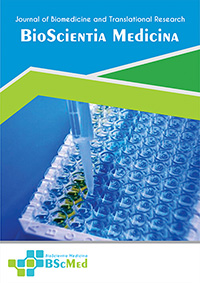Main Article Content
Abstract
Background: Diabetic fracture healing is often impaired due to prolonged and exaggerated inflammation, characterized by elevated levels of pro-inflammatory cytokines like IL-1β and TNF-α. Garcinia mangostana L. (mangosteen) has demonstrated anti-inflammatory properties, and nanoformulations may enhance its bioavailability and efficacy. This meta-analysis aimed to evaluate the effect of Garcinia mangostana L. nanoextract on IL-1β and TNF-α levels during the early inflammatory phase of fracture healing in diabetic models.
Methods: A systematic search was conducted in PubMed, Scopus, Web of Science, and Cochrane Library databases for studies published between 2013 and 2024. Studies investigating the effects of Garcinia mangostana L. nanoextracts on IL-1β and TNF-α levels in in vivo or in vitro models of diabetic fracture healing were included. Data on cytokine levels, fracture healing parameters (where available), and study characteristics were extracted. Standardized mean differences (SMDs) with 95% confidence intervals (CIs) were calculated using a random-effects model. Heterogeneity was assessed using the I² statistic.
Results: Nine studies met the inclusion criteria. Meta-analysis revealed that Garcinia mangostana L. nanoextract significantly reduced IL-1β levels (SMD = -2.85, 95% CI: -3.97 to -1.73, p < 0.00001; I² = 88%) and TNF-α levels (SMD = -2.14, 95% CI: -3.08 to -1.20, p < 0.00001; I² = 82%) compared to control groups in diabetic fracture healing models. Subgroup analyses indicated significant reductions in both in vivo and in vitro studies.
Conclusion: This meta-analysis provides evidence that Garcinia mangostana L. nanoextract significantly reduces IL-1β and TNF-α levels during the early inflammatory phase of fracture healing in diabetic models. These findings suggest that Garcinia mangostana L. nanoextract holds therapeutic potential for improving fracture healing outcomes in individuals with diabetes mellitus.
Keywords
Article Details
As our aim is to disseminate original research article, hence the publishing right is a necessary one. The publishing right is needed in order to reach the agreement between the author and publisher. As the journal is fully open access, the authors will sign an exclusive license agreement.
The authors have the right to:
- Share their article in the same ways permitted to third parties under the relevant user license.
- Retain copyright, patent, trademark and other intellectual property rights including research data.
- Proper attribution and credit for the published work.
For the open access article, the publisher is granted to the following right.
- The non-exclusive right to publish the article and grant right to others.
- For the published article, the publisher applied for the Creative Commons Attribution-NonCommercial-ShareAlike 4.0 International License.





